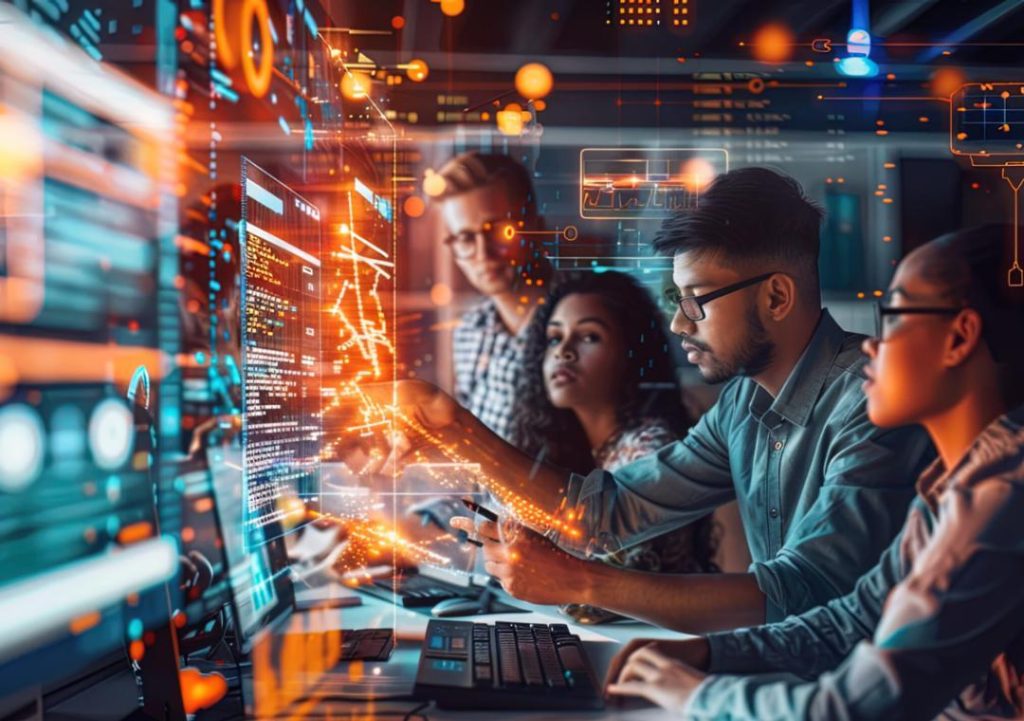
Multi-agent systems enable AI teamwork in complex real-time tasks
Artificial Intelligence (AI) has revolutionized the way we approach complex problem-solving, but its potential is often limited by its reliance on single, centralized intelligence. However, what if AI could work together like humans do, sharing knowledge, expertise, and decision-making responsibilities? Enter Multi-Agent Systems (MAS), a game-changing architecture that enables multiple autonomous agents to collaborate towards a shared goal. In this blog post, we’ll delve into the world of MAS, exploring its benefits, applications, and the future possibilities of AI teamwork.
What are Multi-Agent Systems?
In traditional AI systems, a single, centralized intelligence is responsible for processing information, making decisions, and executing actions. In contrast, a Multi-Agent System is a decentralized architecture where multiple agents, each with its own intelligence, work together to achieve a common goal. Each agent operates autonomously, communicating, negotiating, and coordinating with others in real-time to achieve a collective outcome.
Key Components of Multi-Agent Systems
To understand how MAS works, let’s break down its key components:
- Agents: Each agent is a self-contained unit with its own intelligence, decision-making capabilities, and communication protocols. Agents can be sensors, robots, or even software programs.
- Communication: Agents communicate with each other through various channels, such as message passing, shared memory, or direct interaction.
- Negotiation: Agents negotiate with each other to reach agreements, allocate tasks, or resolve conflicts.
- Cooperation: Agents work together to achieve a shared goal, sharing knowledge, expertise, and resources.
Benefits of Multi-Agent Systems
So, what are the advantages of MAS over traditional AI systems? Here are a few:
- Scalability: MAS can handle complex, large-scale systems by distributing tasks and decision-making among multiple agents.
- Flexibility: Agents can adapt to changing circumstances, learn from each other, and adjust their behavior accordingly.
- Robustness: MAS can tolerate failures, as other agents can compensate for the loss of a single agent.
- Creativity: Agents can combine their unique perspectives and expertise to generate innovative solutions.
Applications of Multi-Agent Systems
MAS has numerous applications across various industries, including:
- Traffic Control: MAS can optimize traffic flow by coordinating traffic lights, traffic signals, and even autonomous vehicles.
- Smart Grids: Agents can manage energy distribution, predicting and responding to demand, and optimizing supply.
- Robotic Swarms: MAS enables a swarm of robots to work together, adapting to changing environments and achieving complex tasks.
- Healthcare: Agents can assist in medical diagnosis, treatment planning, and patient care, leveraging their collective expertise.
Real-World Examples of Multi-Agent Systems
Let’s take a closer look at some real-world examples of MAS in action:
- Google’s AlphaGo: This AI system defeated human world champions in Go by leveraging a network of agents that analyzed and adapted to the game.
- Boston Dynamics’ Spot: This robotic dog uses MAS to navigate and interact with its environment, adapting to new situations and tasks.
- The European Space Agency’s Swarm: This project uses MAS to simulate the behavior of swarms of agents, such as flocks of birds or schools of fish, to better understand complex systems.
The Future of Multi-Agent Systems
As MAS continues to evolve, we can expect to see even more sophisticated applications across various industries. The future of MAS holds great promise, with potential applications in:
- Autonomous Vehicles: MAS can enable vehicles to communicate and coordinate with each other, improving traffic flow and road safety.
- Industrial Automation: Agents can optimize production lines, predict maintenance needs, and adapt to changing demand.
- Environmental Monitoring: MAS can help monitor and respond to natural disasters, such as wildfires or floods, by coordinating a network of sensors and agents.
Conclusion
Multi-Agent Systems have the potential to revolutionize the way we approach complex problem-solving by enabling AI teamwork in real-time. By leveraging the collective intelligence of multiple agents, MAS can overcome the limitations of traditional AI systems, leading to more scalable, flexible, and robust solutions. As we continue to explore the possibilities of MAS, we can expect to see even more innovative applications across various industries, transforming the way we live, work, and interact with our environment.
Source:
https://www.growthjockey.com/blogs/multi-agent-systems






